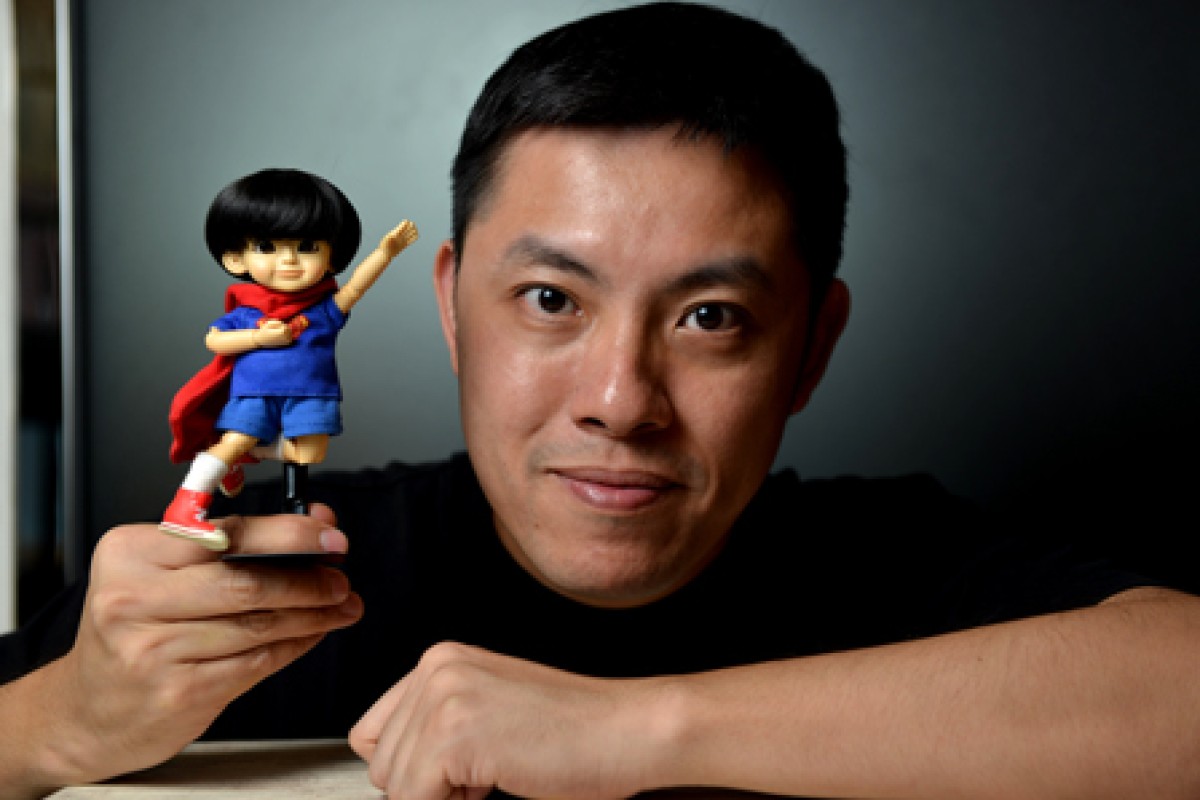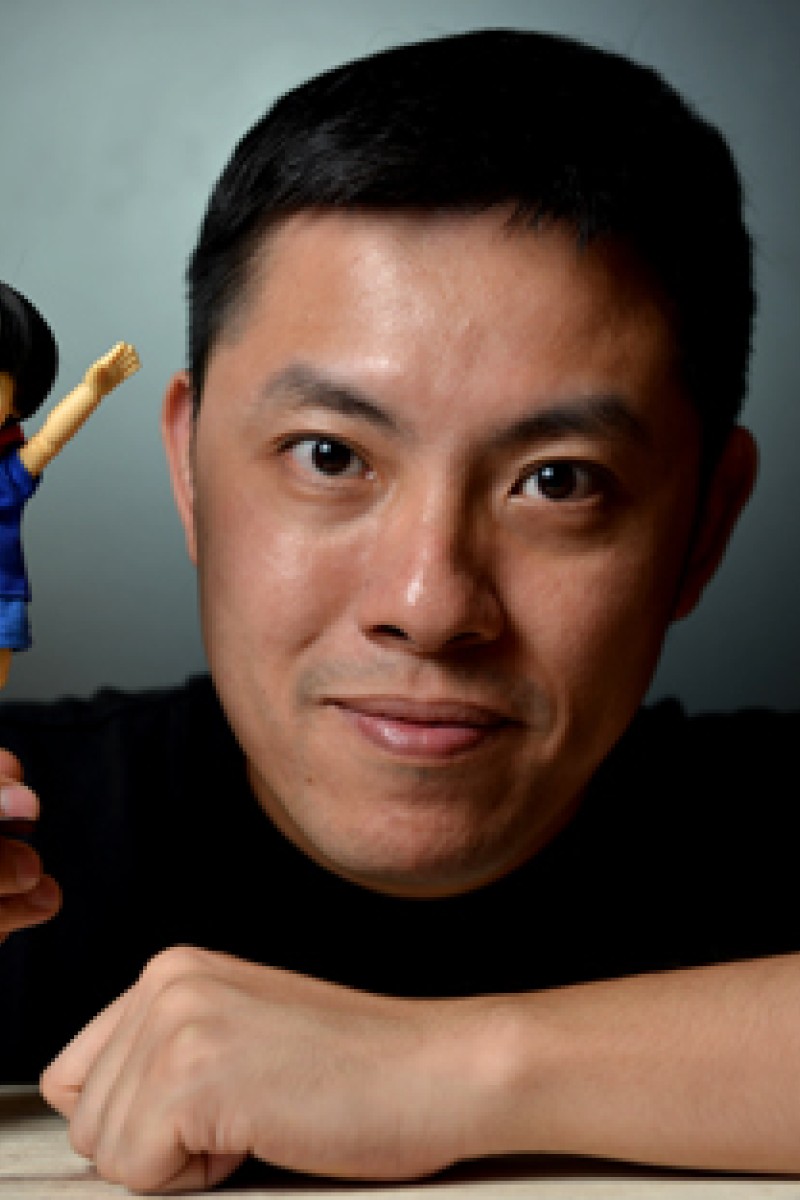 Matthew Tam and his creation, Mui-chan.
Matthew Tam and his creation, Mui-chan.Her designer, Matthew Tam Lap-tak, says doll-lovers like Mui-chan because the doll, based on a five-year-old girl, captures children's expressions well. "Children hardly ever have a blank face or just smile. They are very expressive," Tam says.
However, Mui-chan is no ordinary doll. Her price starts at HK$900 and may cost as much as HK$3,000 for a special edition, so her fans either need their own income, or very wealthy parents. She comes with a huge array of clothes and accessories just like her competitors, Japan's Blythe or Mattel's icon, Barbie.
Yet little Mui-chan has a back-story. She and twin brother, Fat-chai, were born in the 1980s in the fictional neighbourhood of Kau U Fong - not related to the street in Sheung Wan. They have an ordinary family who run a bonesetter clinic while promoting traditional practices, such as kung fu and lion dancing, to foreigners.
Like the characters in Doraemon, Mui-chan never grows up: she will always be five. But she is not stuck in the 1980s. She has all the modern accessories any fashion-forward doll needs: digital cameras, Spider-Man costumes, and a Rilakkuma table set.
The 1980s remain a special time for Tam. He believes people's relationships at the time, especially those between families and neighbours, were closer. He says children then were easily satisfied by simple pleasures, such as playing with friends, or throwing paper planes.
"In today's society, the computer screen and smartphones have become our best friends," Tam says. "You can talk to your friend in Africa through e-mail, while you don't even know your neighbour's surname."
However, through Mui-chan, Tam hopes today's citizens will rediscover the joy and importance of interaction between people.
All his dolls are handmade on the mainland. After Tam and his team design a model, they source the body, shoes, and clothes from different places and have them assembled in a factory. Finishing touches, such as make-up and hairstyle, are all done at iXTEE's Wan Chai studio. But because of the complicated process involved, Tam produces only 100 to 200 dolls for each design. His greatest challenge has been to create Mui-chan's signature bob hairstyle. Tam and his team cut the hair of every doll themselves. "It means no doll looks exactly the same," Tam says. Buyers apparently like this uniqueness; they feel it sets their Mui-chan apart from others.
His most popular dolls are the ones with the iconic smirk, and those dressed in school uniforms.
Tam is also considering a new dimension to Mui-chan's story, by transforming her into a comic-book character. He hopes that this will allow Hongkongers to better relate to Mui-chan, so that they can see her as a friend or family member.
Yet no matter what the future holds for Mui-chan, you can bet you'll always find her smirking - without a hint of fear.
